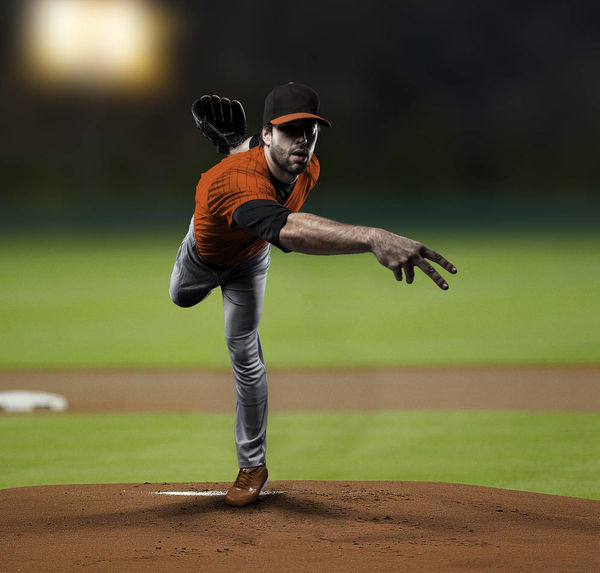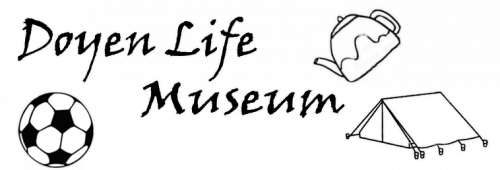The net attack is the heavy artillery of tennis. It is supposed to crushall defence. As such it must be regarded as a point-winning stroke at alltimes, no matter whether the shot is volley or smash.Once at the net hit from the point at the first opportunity given to getthe racquet squarely on the ball. All the laws of footwork explained for thedrive are theoretically the same in volley ng. In practice you seldom havetime to change your feet to a set positon, so you obviate trouble bythrowing the weight on the foot nearest to the ball and pushing it in theVolleys are of two classes: (1) the low volley, made from below thewaist; and (2)the high volley, from the waist to the head. Incontradistinction to the hitting plane classification are the two stylesknown as(1)the deep volley and (2)the stop volley.All low volleys are blocked. High volleys may be either blocked or hit.Volleys should never be stroked. There is no follow through on a lowvolley and very little on a high one.You will hear much talk of chop" volleys. A chop stroke is one wherethe racquet travels from above the line of flight of the ball, down andthrough it, and the angle made behind the racquet is greater than 45degrees, and many approach 90 degrees. Therefore I say that no volleysshould be chopped, for the tendency is to pop the ball up in the air off anychop. Slice volleys if you want to, or hit them flat, for both these shots aremade at a very small angle to the flight-line of the ball, the racquet facetravelling almost along its plane.In all volleys, high or low, the wrist should be locked and absolutelystiff. It should always be below the racquet head, thus bracing the racquetagainst the impact of the ball. Allow the force of the incoming shot, plusyour own weight, to retum the ball, and do not strive to wrist" it overThe tilted racquet face will give any required angle to the return byglancing the ball off the strings, so no wrist tum is needed

Low volleys can never be hit hard, and owing to the height of the netshould usually be sharply angled, to allow distance for the rise. Any ballmet at a higher plane than the top of the net may be hit hard. The strokeshould be crisp, snappy, and decisive, but it should stop as it meets the ball.The follow through should be very small. Most low volleys should be softand short. Most high volleys require speed and lengthThe"stop" volley is nothing more than a shot blocked short. There isno force used. The racquet simply meets the oncoming ball and stops it.The ball rebounds and falls of its own weight There is little bounce tosuch a shot, and that may be reduced by allowing the racquet to slideslightly under the ball at the moment of impact, thus imparting back spinto the ballVolleying is a science based on the old geometrine is the shortest distance between two points. I mean that a volleyermust always cover the straight passing shot since it is the shortest shotwith which to pass him, and he must volley straight to his opening and notwaste time trying freakish curving volleys that give the base- liner time torecover. It is Johnston's great straight volley that makes him suchdangerous net man. He is always "punching" his volley straight and hardto the opening in his opponents court.A net player must have ground strokes in order to attain the netposition. Do not think that a service and voley will suffice against first-class tennisI am not a believer in the" centre" theory. Briefly expressed the centretheory is to hit down the middle of the court and follow to the net, sincethe other player has the smallest angle to pass you. That is true, butremember that he has an equal angle on either side and, given good groundstrokes, an equal chance to pass with only your guess or intention to tellou which side he will chooseI advise hitting to the side-line with good length and following up tothe net, coming in just to the centre side of the straight retums down theline. Thus the natural shot is covered and your opponent's court is openedfor an angle volley cross. Should your opponent try the cross drive, histhan his chances of error
Strive to kill your volleys at once, but should your shot not win, followthe ball 'cross and again cover the straight shot Always force the mantriving to pass you to play the hardest possible shotAttack with your volleys. Never defend the ball when at the net. Theonly defensive volley is one at your feet as you come in. It is a mid-courthot Volleys should win with placement more than speed, although speemay be used on a high volleyClosely related to the volley, yet in no way a volley stroke, is theoverhead smash It is the big bertha of tennis. It is the long range terrorthat should always score. The rules of footwork, position, and directionthat govem the volley will suffice for the overhead. The swing alone isdifferent. The swing should be closely allied to the slice service, theracquet and arm swinging freely from the shoulder, the wrist flexible andthe racquet imparting a slight twist to the ball to hold it in court. Theoverhead is mainly a point winner through speed, since its bounce is sohigh that a slow placement often allows time for a recovery.The overhead is about 60 per cent speed, and 40 per cent combinedplace and twist. Any overhead shot taken on or within the service-lineshould be killed. Any overhead, behind the service-line, and back to thebaseline, should be defended and put back deep to, allow you anotheradvance to the neta The average overhead shot that is missed is netted. Therefore hit deepis a peculiar fact that over 75 per cent of all errors are nets with only 25per cent outs. Let this be a constant reminder to you of the fact that allground strokes should have a clear margin of safety of some 8 inches tofoot above the net, except when attempting to pass a very active volleyerIn the latter case the shot must be low and the attendant riskcompensated by the increased chances of winning the point with a passDo not leap in the air unnecessarily to hit overhead balls. Keep at leastne foot, and when possible both feet, on the ground in smashing, as itaids in regulating the weight, and gives better balance. Hit flat anddecisively to the point if desired.Most missed overhead shots are due to the eye leaving the ball; but asecond class of errors are due to lack of confidence that gives a cramped,half- hearted swing. Follow through your overhead shot to the limit ofyour swing.
